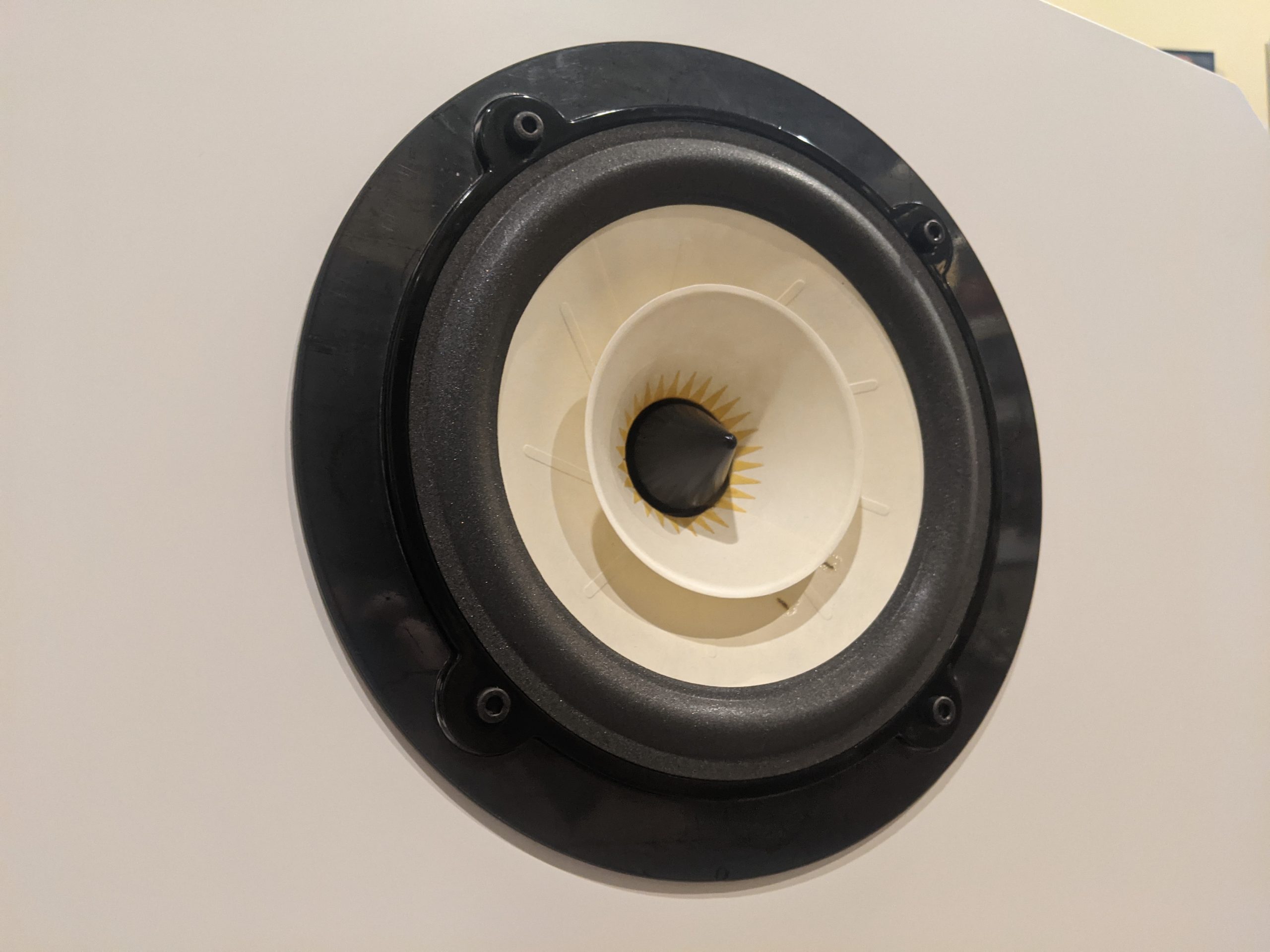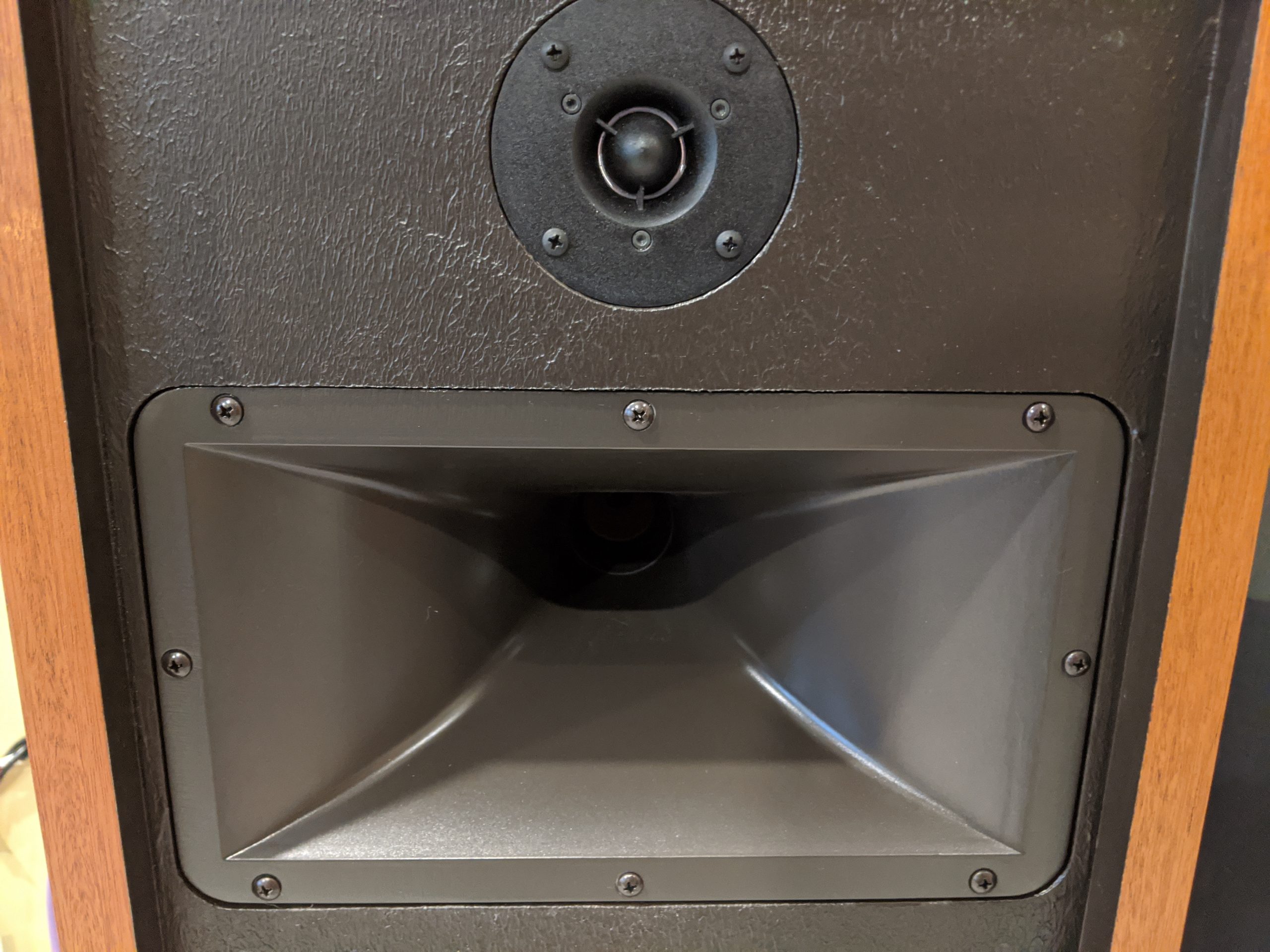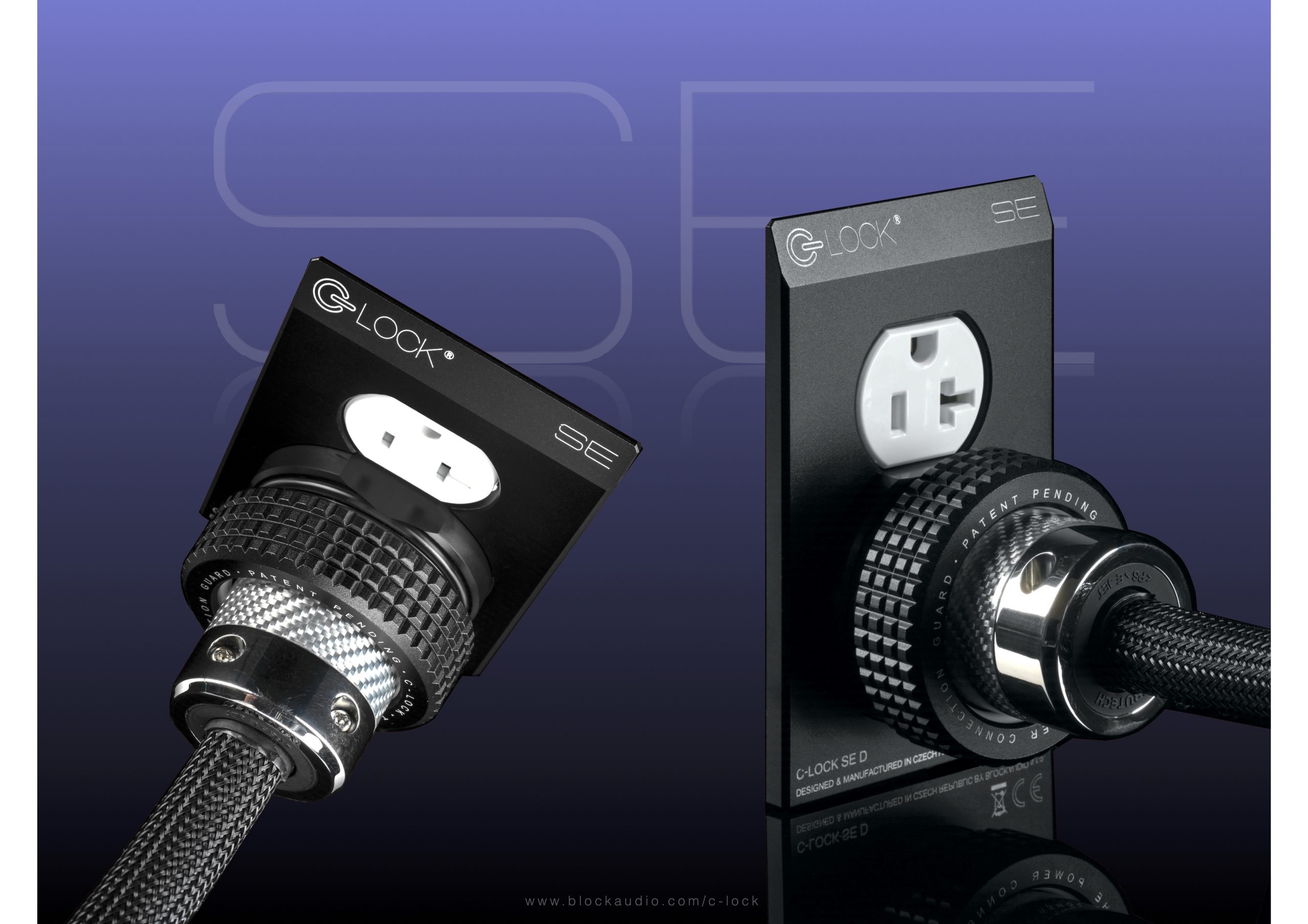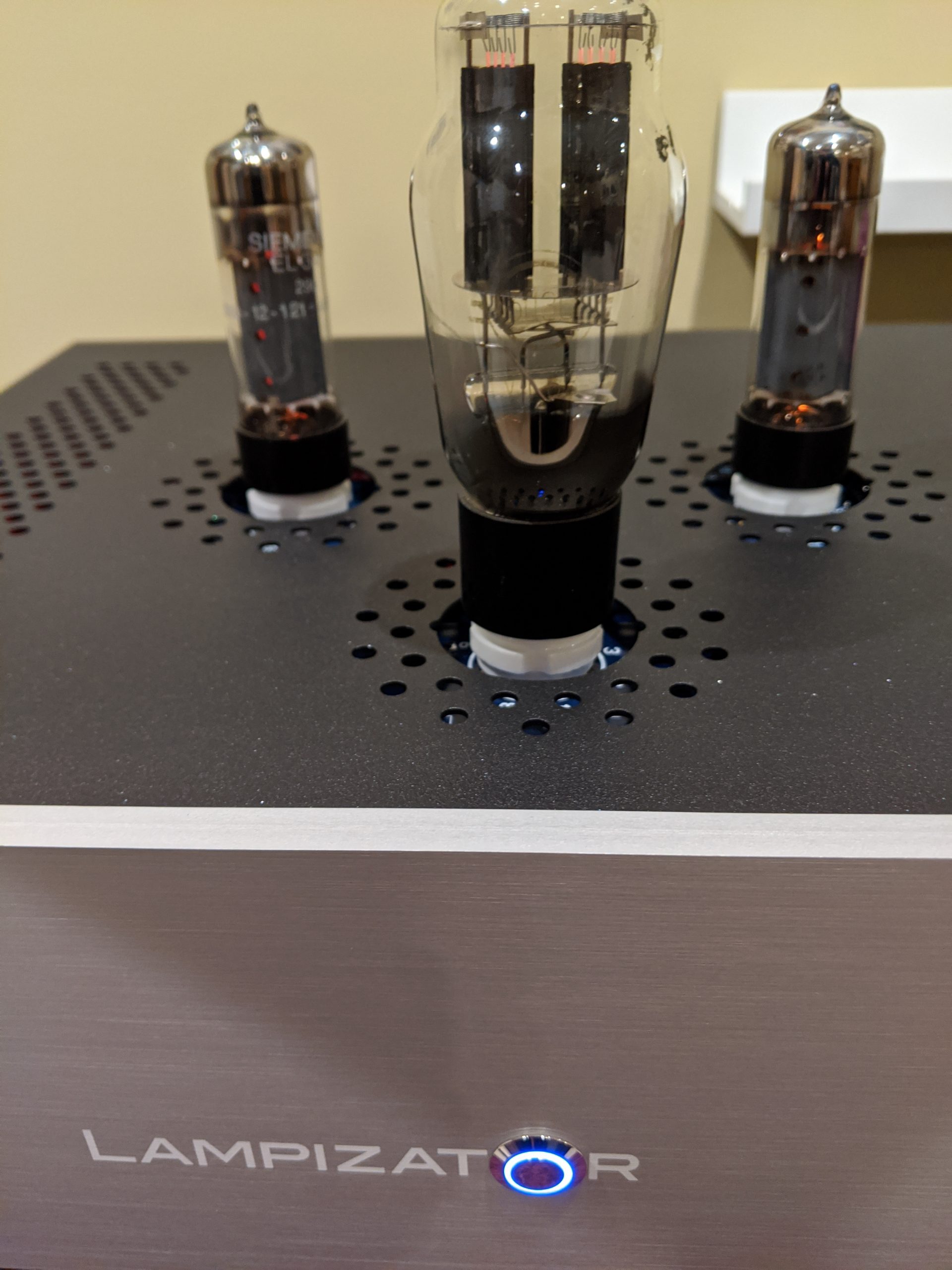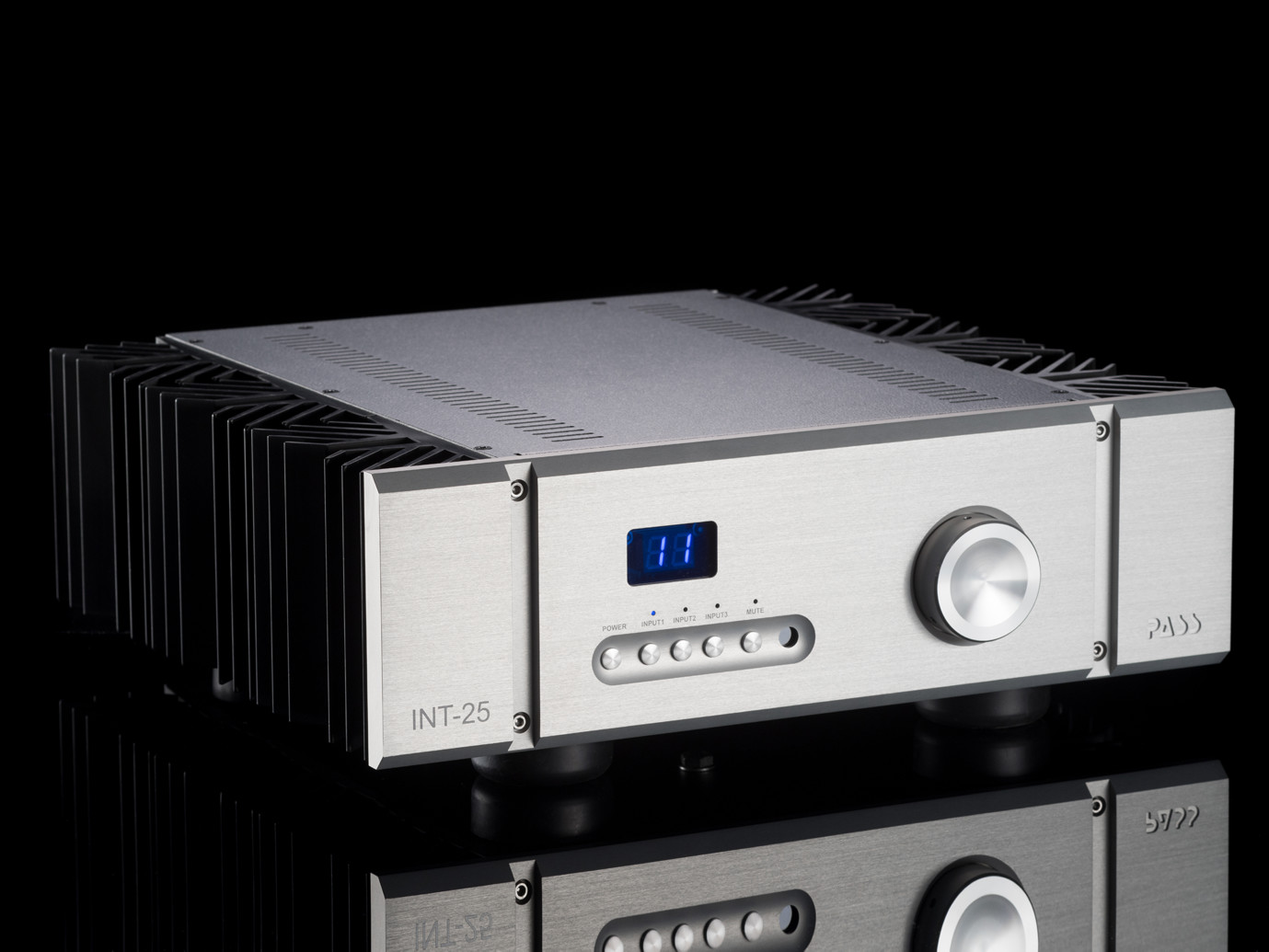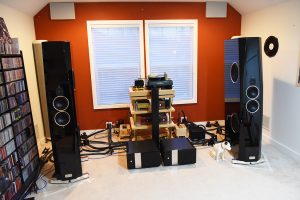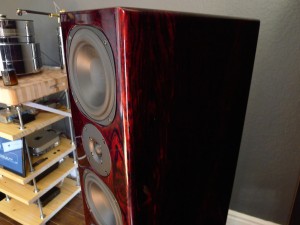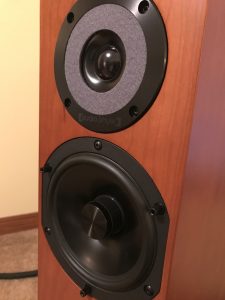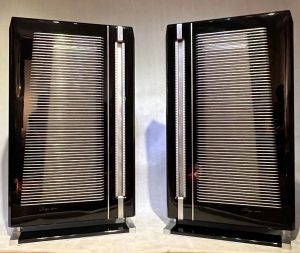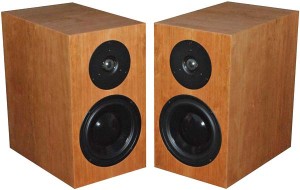
The Muse Studio is an upgraded version of Daedalus Audio's lowest priced loudspeaker, the Muse. Both Muse speakers were designed for listeners with smaller rooms, perhaps just like mine? Utilizing the same cabinet, and drivers as the Muse, the Studio employs a crossover network developed for Daedalus' Athena speakers to give it a higher level of definition, and accuracy. Yes sir, Mr. Hinkley, I am an excellent target for the very design goals of your Muse Studio.
Bring it on.
Sounding Off
Having made it a point of emphasis to listen to Lou Hinkley's loudspeakers every year at AXPONA, I can say without hesitation that regardless of model, Daedalus speakers have never failed to impress me. While familiar with Daedalus, I didn't really know Lou Hinkley, so to add some personal context, I asked him to answer a few questions about his high-end audio journey. His responses are sprinkled throughout my review, and begin with the following:
"I've played guitar since I was 13, my inspiration was first hearing a John Lee Hooker record. That was it for me, and I started learning to play blues and slide guitar. In my 20s I played professionally but then hung that up to be a dad. (Good move!) Built homes for about ten years, and then I started Daedalus in 1992 making speaker systems for professional acoustic instruments. Customers were Lou Reed, Martin Simpson, String Cheese Incident and many others. About 2000 I shifted my focus to home audiophile systems. Oh yeah, and I built my first DIY speaker when I was a teenager."
Lou Hinkley describing the general Daedalus product line:
"We have what I call the Athena series which are the designs based on our Daedalus 8" woofer, and the new Apollo series, which are based on the Daedalus 10" woofer. I try to keep the quality level the same throughout the line, so I would not say we have a clear hierarchy of "entry" level to "statement." They are all very close in quality, and the differences have to do with suitability to different rooms and applications. Basically, I am a craftsman, and my overriding concern is the quality of what I do; this often means a sacrifice in the bottom line profit… I've been in business a long time and know how to make that work, but when push comes to shove, I'll tighten my belt before making compromises in the quality of my work. I love music, and wood, so doing the best with that I can is what gets me out of bed in the morning."
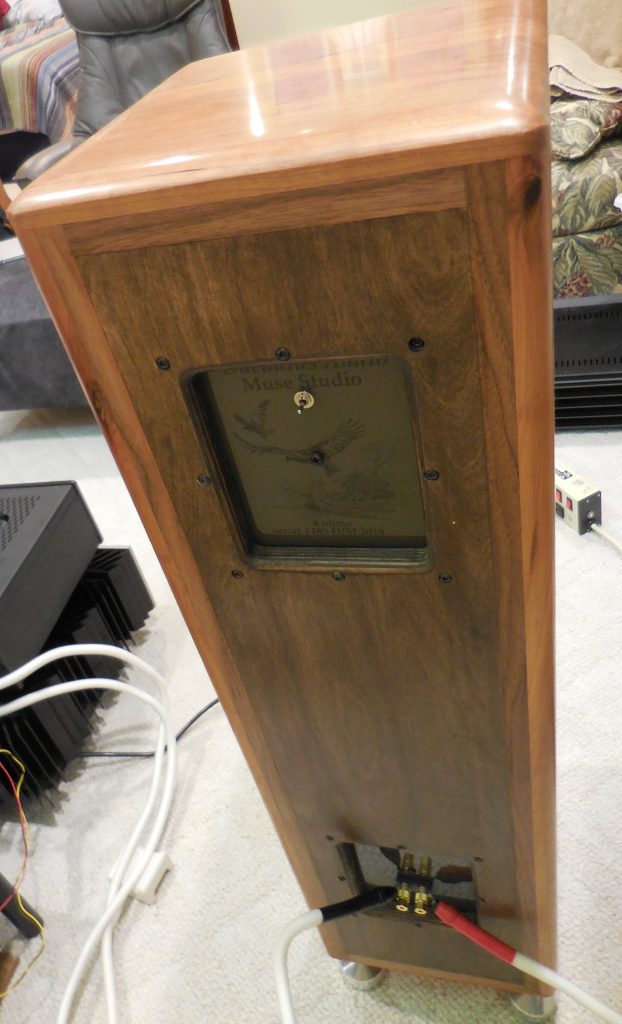
The General Engineering Skinny
Standing 38" tall x 11" wide x 14.5" deep, and weighing in at approximately 90 pounds each, the Muse Studio is a front ported, 3-way floor-standing speaker. Additional specifications are as follows:
- Driver complement: 1" soft dome tweeter/ 4.5" Mid-range/ 8" woofer.
- Speaker Impedance: 8 ohms (+/- 1 Ohm).
- Sensitivity: 95.5dB SPL at 2.83 volts @ 1 meter.
- Power handling: 3-300 watts.
- Frequency response: 32Hz to 20kHz (+/- 2 dB).
The speaker features a rear-mounted tweeter control to tweak output up or down by 1dB from the center flat position. It is wired for a single speaker cable termination; and is front ported to allow additional placement flexibility. The review speakers were furnished with optional Daedalus spikes, and DiD Isolation feet for each speaker. I used both for the duration of the review. The DiD footers might be considered optional, but in my carpeted room, the spikes were a nicely made must.
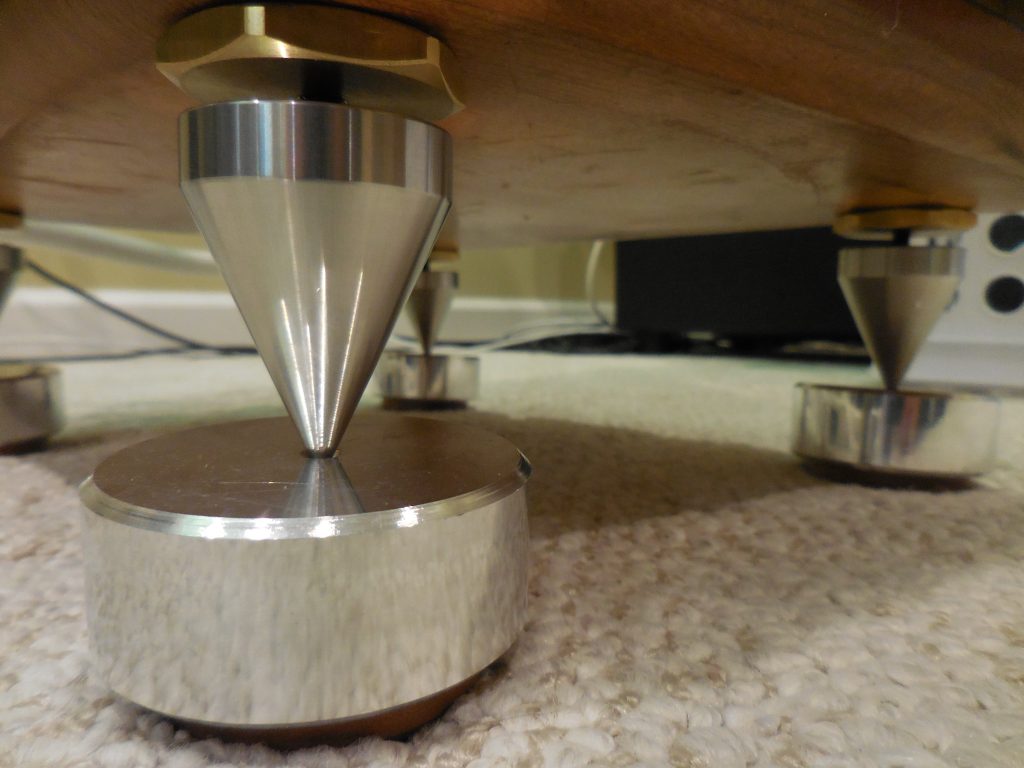
Lou Hinkley muses on the Muse:
"A few years back I decided to design a speaker that was a three way, but would function in a room much like a two-way. One that would be very room friendly and could be cohesive in a short range. My first design was a stand mount, but it became clear that if we ditched the stand, keeping the same footprint, we could have a better speaker. The Muse was born. I wanted to keep this more affordable and have a slightly "warmer" voice, so we raised the hand-off from the woofer to the mid. This radically reduced the cost of the crossovers, and has a very musical presentation, but with the highest reference components it did not have the detail and resolution of our other systems. The Muse is a great fit for many systems, but by substituting the Athena style crossover we have a true reference speaker. The Muse/Studio. By the way, I call it that because I feel this is a near perfect speaker for recording studios."
As are all Daedalus loudspeakers I've seen, Muse Studio cabinets are gorgeous. The beautiful hardwood inlay and joinery work is stunning. The enclosures are solid hardwood, .75" thick, with a void free Baltic Birch ply baffle, and backs which also have solid hardwood, .625" thick laminated onto them. The baffle and back thickness is 1 3/8". They are heavy little suckers.
Lou Hinkley's ideas on cabinet building:
"...My approach has always been that a very stiff non-resonant cabinet is best. It takes a lot of MDF to achieve the results which we can get with solid hardwood. I have been pleased to see other makers embrace this approach over the last 10-15 years. We heavily brace the cabinets with Baltic Birch structures and solid maple as well as using brass and aluminum to defeat resonance issues. This gives us an incredibly inert cabinet that does not deaden or alter the energy for the drivers."
Muse Studio's 8" woofers are a proprietary design, made in the USA, and have been continually refined since the initial design 25 years ago. The tweeters are the newest version of the Eton 1" dome that was redesigned in 2017. Lou Hinkley believes this driver is one of the best soft dome tweeters in the world. Daedalus crosses over to the tweeter well above its lower limits, which eliminates driver stress, and ensures the sound is always clear and effortless. The midrange driver is full-range, and modified by Daedalus. Like the woofer, it uses a paper cone with cloth surround for efficiency and speed. All paper cones are coated to improve performance, and resist moisture.
Mr. Hinkley has a long association with high-end speaker designer Guy Veralrud. Mr. Veralrud designs unique passive crossover networks for each Daedalus speaker from scratch, using extremely high end capacitors, and handmade inductors. Daedalus uses Duelund resistors and several different high-end caps for voicing. There are no electrolytic caps in any Daedalus design. Mr. Hinkley stressed that while this is unusual for a sophisticated multi driver crossover due to high cost, it is critical to great sound.
Ready, Set(up), Go!
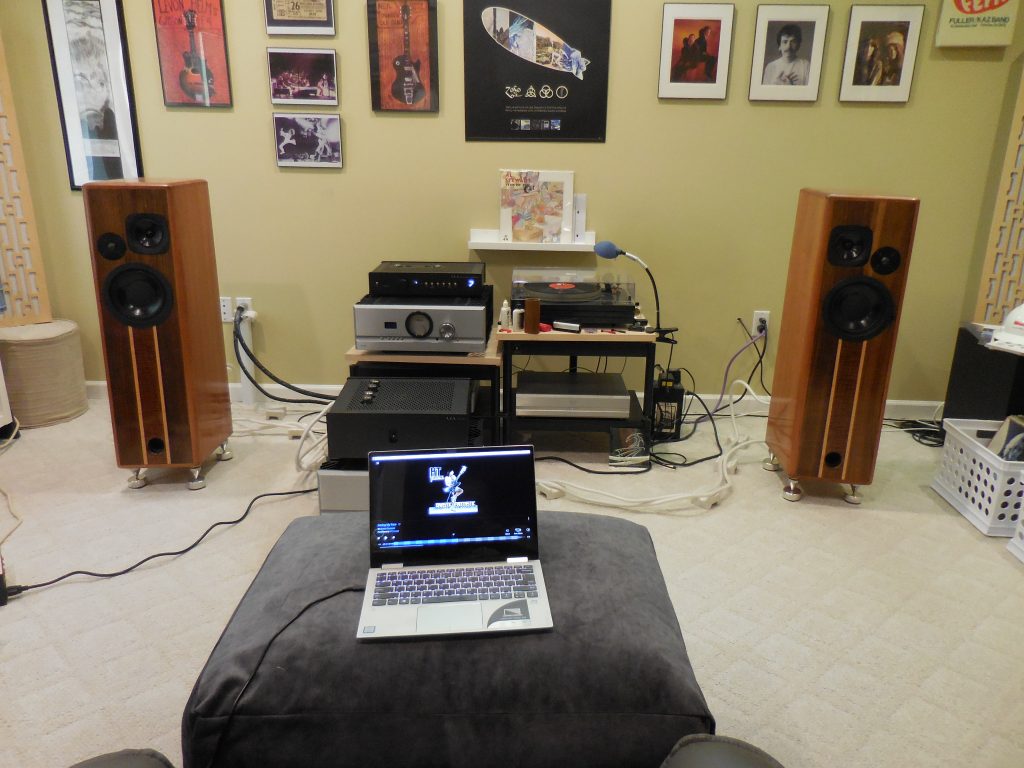
The Tune Saloon: A messy, but good sounding room.
I use a long wall placement for speakers; it works very well with the 16' x 12' dimensions of my listening room. To experiment, I spent the first few days moving the Muse Studios around to as many different locations as I could. There were a couple spots where bass didn't work so well, and a few others where the top took over too much. But in between, it seemed I could have my pick: close, far, together, even upside down. (Wink!) The last stop? 40" side to sidewall, and set square 26" from speaker rear to front wall, forming an almost 8 foot equilateral triangle on center to the listening position. (The front baffle is angled so there is a toe-in when set square at the rear.) This location allowed the speakers to breathe, and do what they do really well; image with extreme clarity, and punch the air with unexpected macro-dynamics. Once situated, I placed the DiD isolation "feet" under the spikes; which did noticeably improve overall sound.
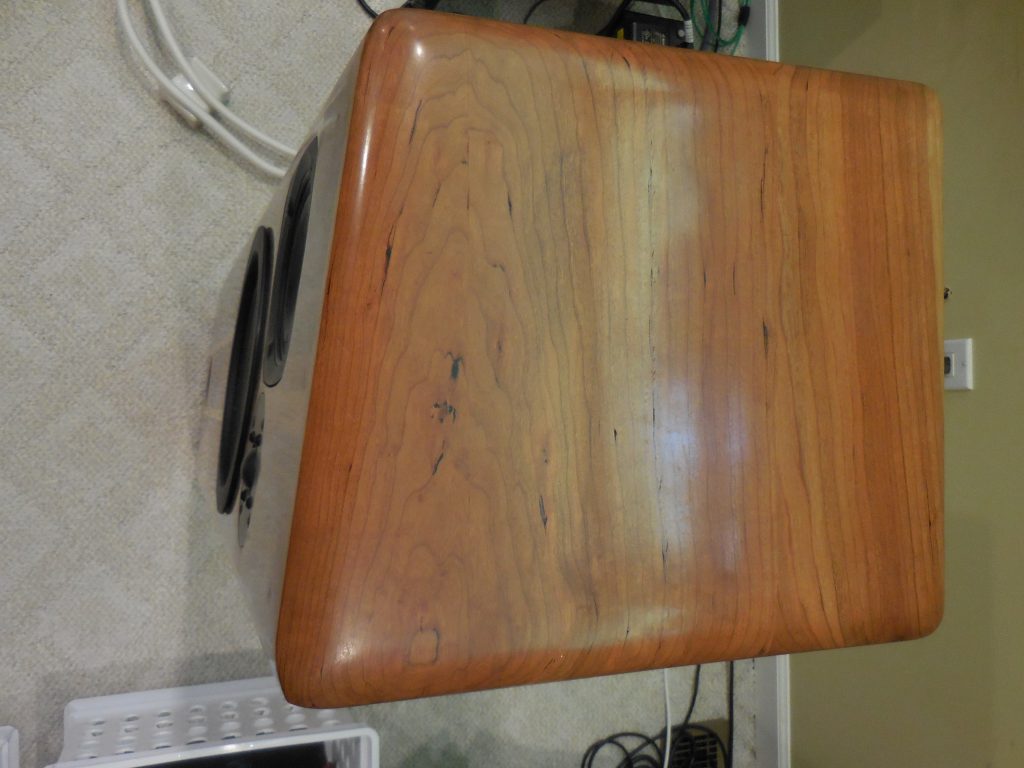
The Muse Studio has 8 degrees of toe-in built into the cabinet design.
The review pair of Muse Studios came with a well-made pair of magnetic black grills ($350 option) to protect the drivers. I typically eschew grill use (mainly because I enjoy seeing the business of a loudspeaker). But I only detected a very slight change in sound, so in my estimation, the grills are essentially, acoustically transparent. That stated, sonic observations in this review should be considered as noted with the grills off. So make of that what you will. (Place smart ass smiley face here!)
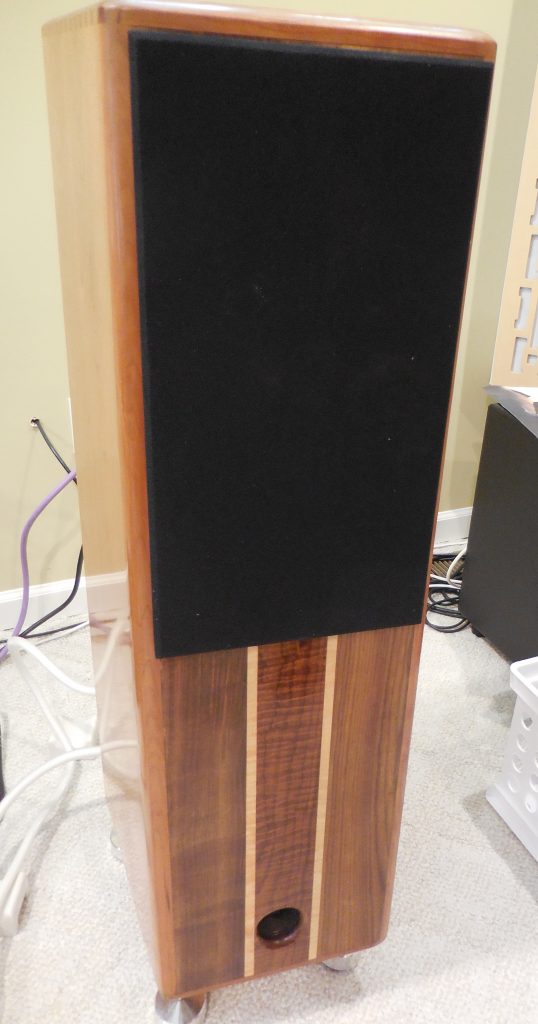
So Many Amplifiers, So little Time
A couple weeks before receiving the Daedalus speakers, I was fortunate to receive two new-to-me pieces of audio gear to audition: the Linear Tube Audio (LTA) MicroZOTL Preamp, and ZOTL40 Reference tube amp. (Review of both forthcoming.) I used the MicroZOTL preamp for the duration of the review to drive the Muse Studios with a bevy of excellent amplifiers: the LTA ZOTL40 amp, my Pass XA 30.8, a First Watt F7, and my semi-clone DIY First Watt F4. I also used the very fine Pass INT-60 integrated amp. The Muse Studio is an easy speaker to drive. Even the F4 could muster enough oomph to drive them to a reasonable, and very enjoyable volume level. The takeaway? Five high quality amplifiers, each with different designs, power specifications, and personalities, made the Muse Studios sing beautifully.
Gloves (Grills) Off, Time to Rock!
The Muse Studio is a lively speaker, with a high degree of resolution, and energy. They really surprised me with their lightning-fast transients, and unexpected dynamic wallop.
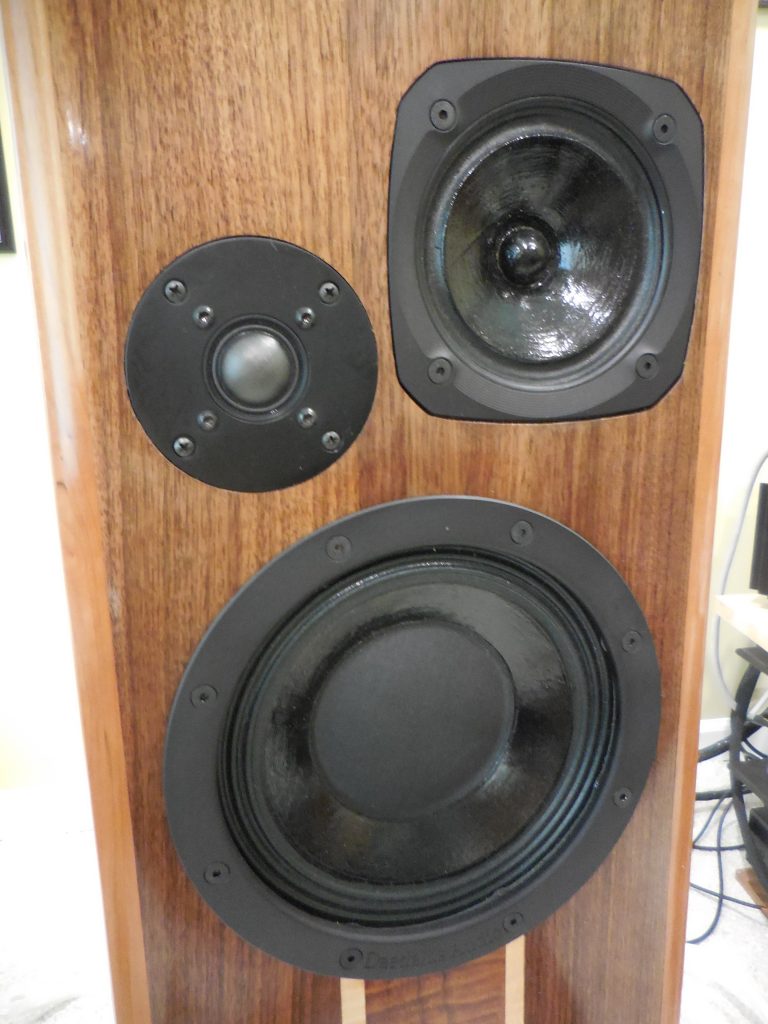
I like audio that is balanced. Smooth is good, but not oil-slick smooth. Truthful is good too, just not so much to lose all heart. Hearing the warts on poor recordings is part of listening to high-end audio, but I don't want to hit the eject button just because "Louie Louie" sounds like The Kingsmen are cutting up a guitar with a circular saw. Muse Studio's are generally smooth, balanced performers; even while keeping their monitor-like design goal of accuracy. Transparency is excellent. Detail retrieval is high. Lower midrange through midbass, is wonderful: immediate, impactful, and authentic. Upper mid-range through treble is very clear, and present. These speakers have a vibrant response in the upper octaves, and yet I could listen to them for hours on end without fatigue.
The Frequency of Great Sound
The stated 32 kHz bottom might not able to fully reach the lowest note on a piano, but the bass is still deep, and taut, with excellent pitch definition (a design criterion of Lou Hinkley). I did not expect the 8" woofer to pressurize my room with gut wrenching bass, but the speakers are not bass-shy. Rather, their bass is solid, fast, and articulate; imbued with just a hint of richness. Their accuracy insures they do not manufacture bass if it does not exist on a recording. While listening with a couple friends to an original vinyl copy of Rush's Moving Pictures, it was obvious low bass was compressed, and not going boom as expected. This caused my listening buddies a moment of bass-less angst. I fixed that quickly, and went all show audiophile on them, by playing Dire Straits "Private Investigations," which provided the deeply impressive bass they were expecting. That changed the guest-listener narrative!
The Muse Studio lower midrange has excellent transparency, maintaining lucidity while still providing a modicum of tonal warmth. Midrange is more neutral, allowing the natural tone of instruments to shine. The upper midrange gives these speakers an exciting attack, yet the timbre of instruments, and voices remain excellent. The lower treble presence region is high energy, with silky, bell-like clarity. Although the inevitable aging of my 63 year-old ears has left my hearing well short of the 20kHz mark. I hear frequencies high enough into the brilliance range that I can say without being disingenuous, upper treble reproduction is pretty damn good! I hear sparkle, shimmer, and a good amount of air, all with zero sibilance.
Staging the Images
I know it sounds like reviewer-speak, but the Studios can, and do, disappear, leaving nothing but a mental picture of musicians swirling about the room. On most recordings, imaging was nothing short of spectacular. But when a recording demands instruments, and / or voices emanate from one speaker only, the sound leaps out toward the listening chair, sometimes startlingly so.
As I've noted many times in the past, my room does not allow for great stage depth, but the Muse Studio is the best I've heard in the Tune Saloon, when set a couple feet away from the front wall. Music radiates outward from the front plane of the speakers, while also extending back to the front wall.
The Muse Studio's ability to render an immense stage; a notion of venue space, and believable imaging, may be their most impressive attributes. Images are appropriately sized, and very dense. Yeah, that overused HiFi adjective...Palpable. The stage extends from wall to wall, and even beyond. Due to this highly developed staging, the Daedalus speakers convey a wonderfully dimensional, musical performance. On the DSD version of Avalon, Roxy Music's "To Turn You On" was absolutely huge, engulfing me in music.
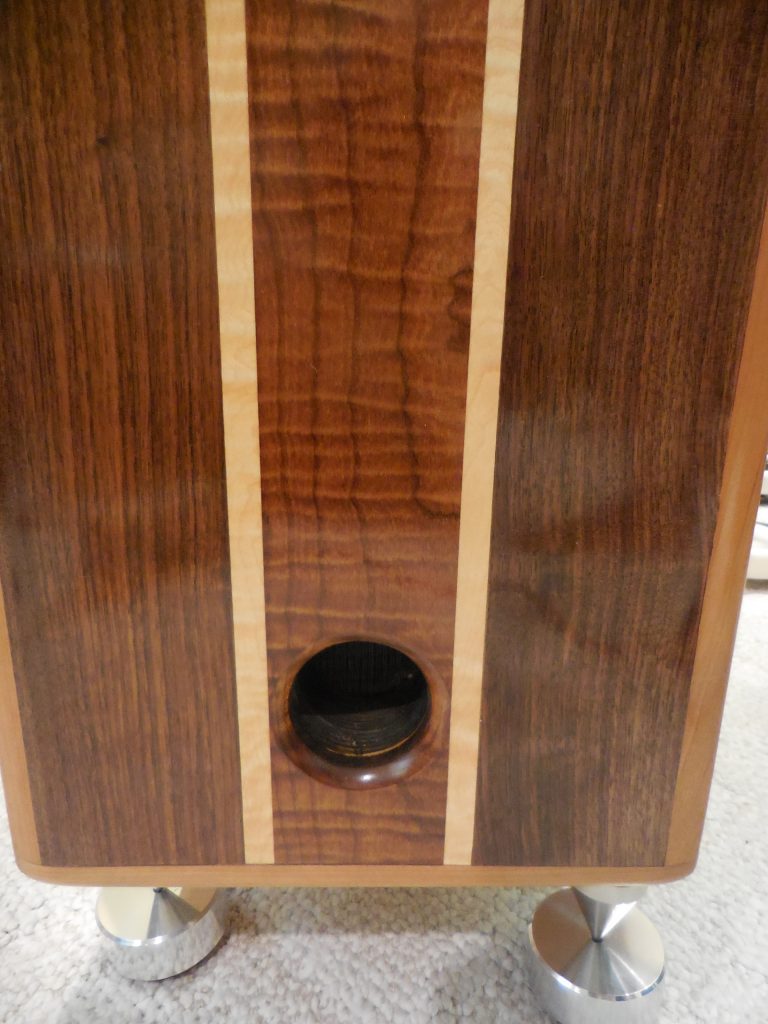
Dynamo Fun
The dynamic capabilities of this speaker are the most surprising finding of my review. While tone, staging, and imaging are definite strengths of the Studios, these speakers are tremendously punchy too. Transient speed is quite apparent, especially with percussive elements. I would never have guessed the Studios to have such quick, rapier-like volume swings, but they do. Micro dynamics are very good as well, with a high level of contrast between the tiniest changes in volume. On Sir Elton's "Madman Across the Water," the Daedalus speakers revealed an ability to subtly shift volume levels of various details within the recording, adding much to the realism of the music. But it is their ability to crescendo in a heartbeat that is really a head-turner. Don't believe me. Turn up the volume, and cue Huey Lewis and the News, "Heart of Rock & Roll." The opening five seconds will soil your shorts.
Okay, yes, that was hyperbole. Your shorts will be fine.
(Depends are optional, and not required for listening.)
Detail is Resolute
To reiterate, the Muse Studio does detail. Not so much as to sterilize the sound, but enough that you never have to wonder if you are hearing the entire recording. Resolution is excellent. While listening to the The Proclaimers song, "I'm Gonna Be (500 miles)," the intelligibility of words, and especially (having just returned from Scotland) the prominence of the singer's Scottish accent, was striking.
Tone is King
I asked Lou Hinkley about his goals for voicing the Muse Studio. His response is below:
"As always, my first focus is on tone. Having over fifty years playing music, and knowing first hand how instruments actually sound close up, tone is king for me. Over the years I have found that if you really get the tone, and that space around each note, including the attack, and decay right, then that means you are getting the phase, balance, response etc, right as well, and all the other audiophile check boxes happen. So the short answer, how do I voice? I listen for real life tone, which includes the space, attack, and decay."
Timbre!
I really like Lou's thoughts on tone. I hear them in the Muse Studio. Guitars sound great—a nod to stringed musician Hinkley—so for a bit of fun, I popped on the The Outlaws "Green Grass and High Tides," a classic southern rock dueling-lead rockathon. I cranked it. Really cranked it. It was mesmerizing. Soaring guitar solos. Serious dynamic shifts. I heard the defining space around the notes, the unrelenting attack of the twin guitars, and the fuzz as they decayed into nothingness. Granted, I could never pick them out as easily as expert guitarists, but I could clearly hear tonal differences between the Stratocaster in the left channel, and the Les Paul in the right. The best news of all: while loud as hell, there was an acceptable (Read: not too hot!) level of ear-heat; no reason to turn down this signature track from the original 1975 debut album, The Outlaws.
Gawd, it was some kind of awesome! I got chills.
Staccato Musical Notes
After a few weeks of gear swapping, I left the system alone to settle into one audio whole. I began to notice how well the speakers were able to unravel complex orchestral and jazz fusion recordings. With increasing familiarity, other traits began to emerge, like the excellent rhythm and timing on Foghat's "Shirley Jean," and the spooky "surround-sound" of Rory Gallagher's live rendition of "Tattoo'd Lady" from the Irish Tour CD. I kept thinking someone was walking around the house, but it was only crowd noise. Ha! The Muse Studios are equally at home playing the big sound of Counting Crows "Hard Candy," as they are the quiet emotional confidence of Shawn Colvin's "Something to Believe In."
Staging, dynamism, and outstanding tone were constant conversations in my listening notes. Peter Gabriel's "Sledgehammer" was a tonal, textural triumph; pumping percussion, sinewy bass, soulful background singers, and brassy horns all beautifully reproduced. I've long been a huge fan of the band Poco. The digitally remastered version of Richie Furay's great song, "Hurry Up" is a favorite. Reproduced by the Muse Studio, I heard great clarity and the wonderful pitch of Timothy B. Schmit's bass, as well as the dynamic impact, and tonal realism of George Grantham's drums. On yet another example, Elvis Costello and the Attractions' great tune, "Everyday I Write the Book," mid-bass had excellent definition, and the whole recording, a rich and enveloping tonal quality.
Making Music
With the volume up, there is an almost emphatic drive to music played through the Muse Studio. They demand attention. Crystalline highs, and exciting midrange prod, as if trying to find the soft spot in my brain; while bass waits in ambush mode to pummel with a velvety hammer...
Indeed, the Daedalus speakers sound terrific loud, and I loved cranking them up, but as a reviewing tool, I've retreated from high-volume listening as the only true test of an audio system. The Muse Studios create moments of sonic bliss without resorting to peeling the paint off the walls. They are formidable performers at ridiculously low volumes. I hear stage, and imaging. I hear dynamics, separation, clarity, and fine detail. Turning it up to a level loud enough to get a tad of impact—say 60 to 70 dB—all the attributes I hear at the very lowest levels remain; the music simply gets louder. It's a special quality to me, that a loudspeaker, component, system, can scale, while maintaining solid sonic performance.
But is it Musical?
Musicality is arguably the most personal of all subjective terms used to discuss fine audio. Building blocks of a musical system can be measured, but in the end, to this listener, musicality is as much an emotional connection, as an electronic one. When a system hits all the right notes for musical enjoyment, I lose interest in writing audio buzzwords. I'd rather just listen. I did a lot of listening in the past three months with the Muse Studios.
Musical. Yes.
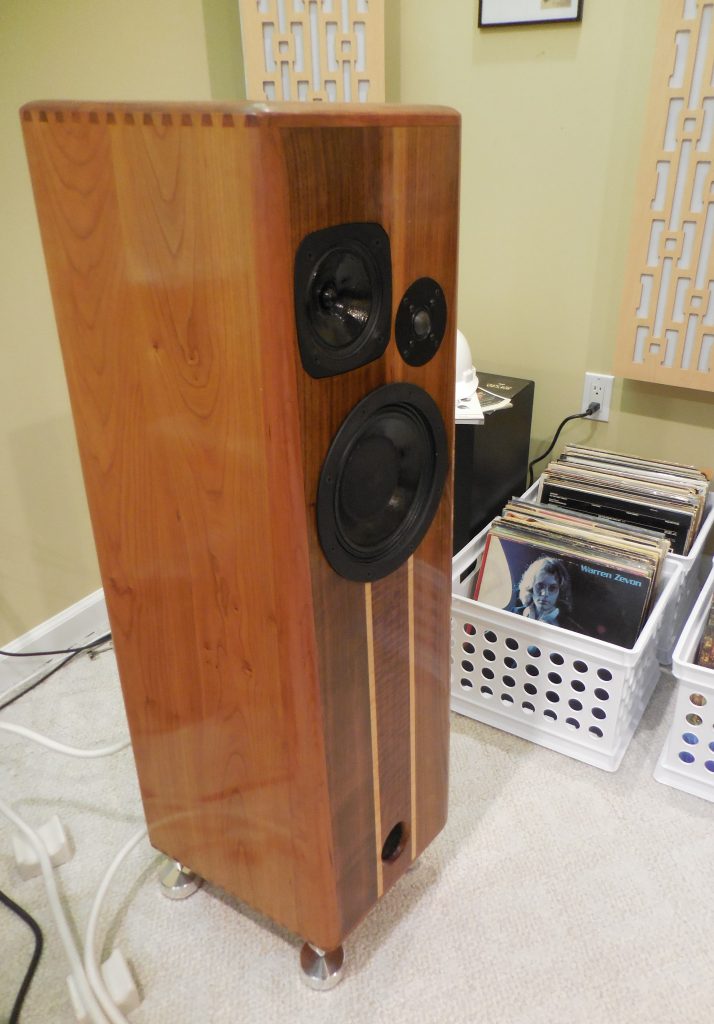
At eleven grand or so, depending on options (Note: A price increase is upcoming), the Daedalus Audio Muse Studio is one of the least expensive ways to experience the aural pleasures of Lou Hinkley's bespoke loudspeakers. Room-friendly, with the sonic traits of a refined studio monitor, the Muse Studio never failed to entice me into listening to just one more tune. Most enthusiastically recommended!
Daedalus Audio Muse Studio Speakers (as tested)
Current Base: $10,750*
Duelund option: $399
Grill Option: $350
Center inlay Option: $300
Total per Review pair: $11,799 USD
Also used in this review:
Stainless Steel/Brass Leveling Spikes: $32 ea (8 required)
DiD Isolation Speaker Footers: $45 ea. (8 required)
(*Cherry hardwood is standard cabinet material)
Daedalus Audio
7060 Portal Way #120
Ferndale, WA 98248
360.312.3604
https://www.daedalusaudio.com/
Intro photograph courtesy of Daedalus Audio. All other photographs by Gary L Beard




